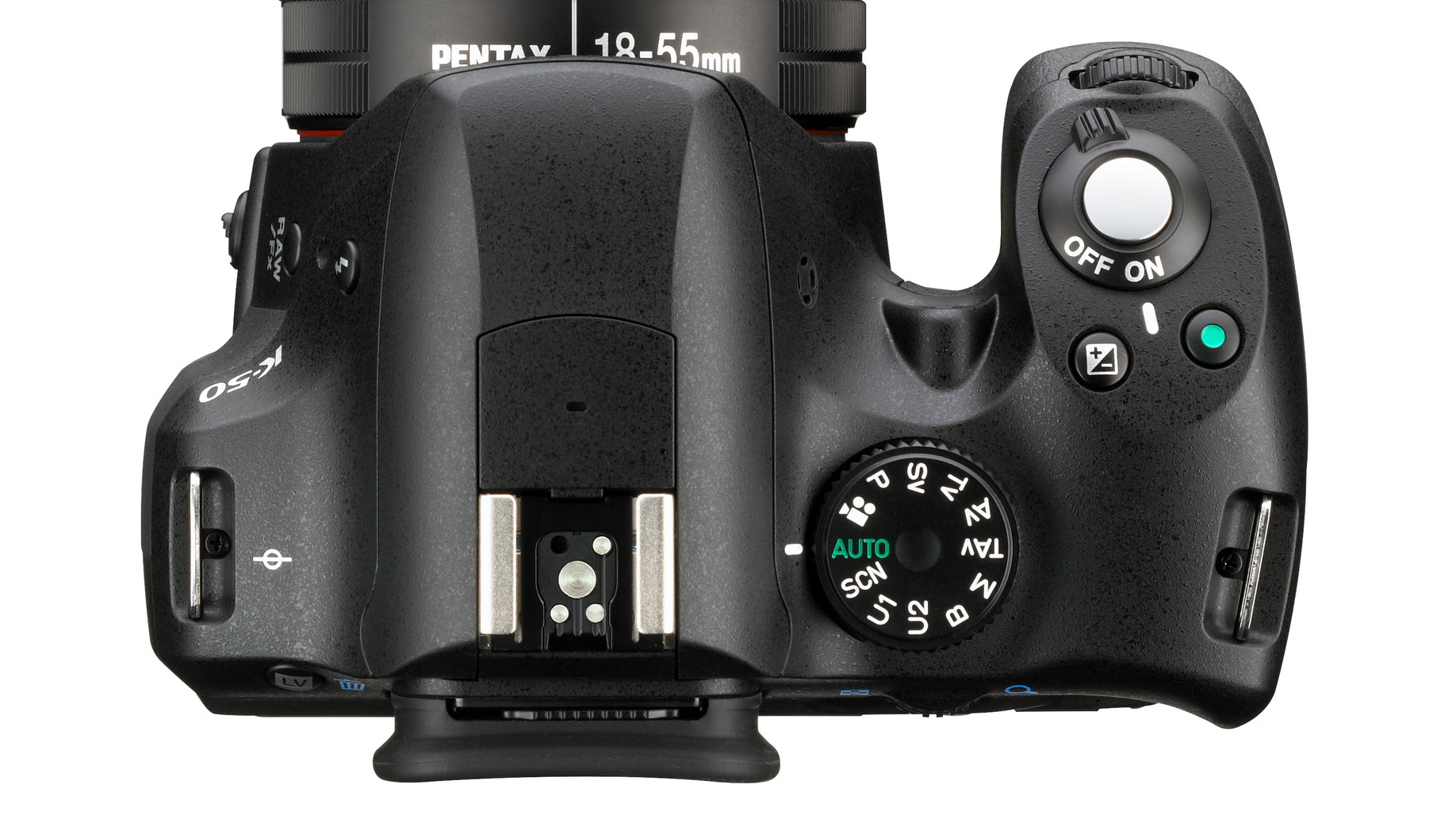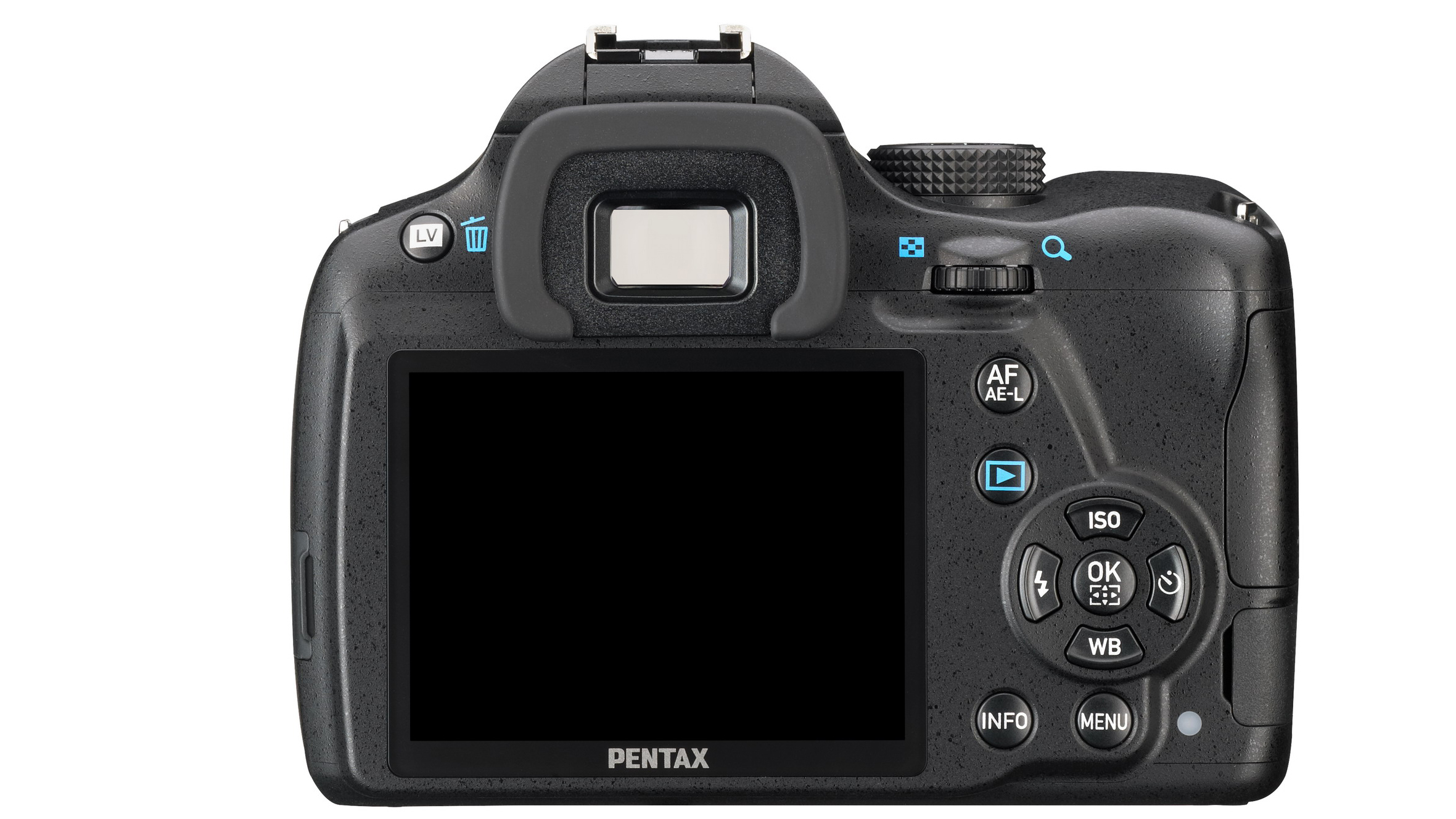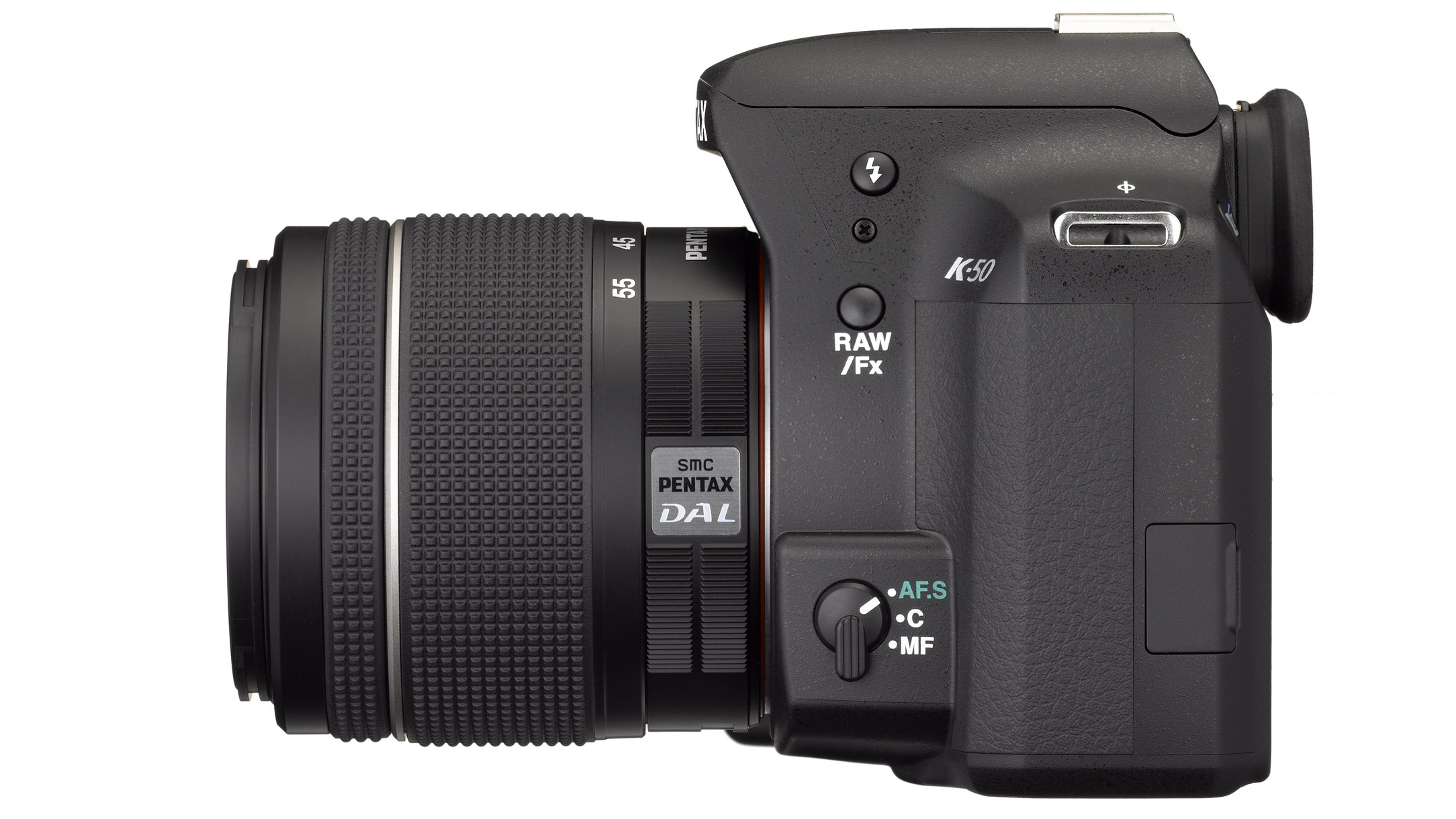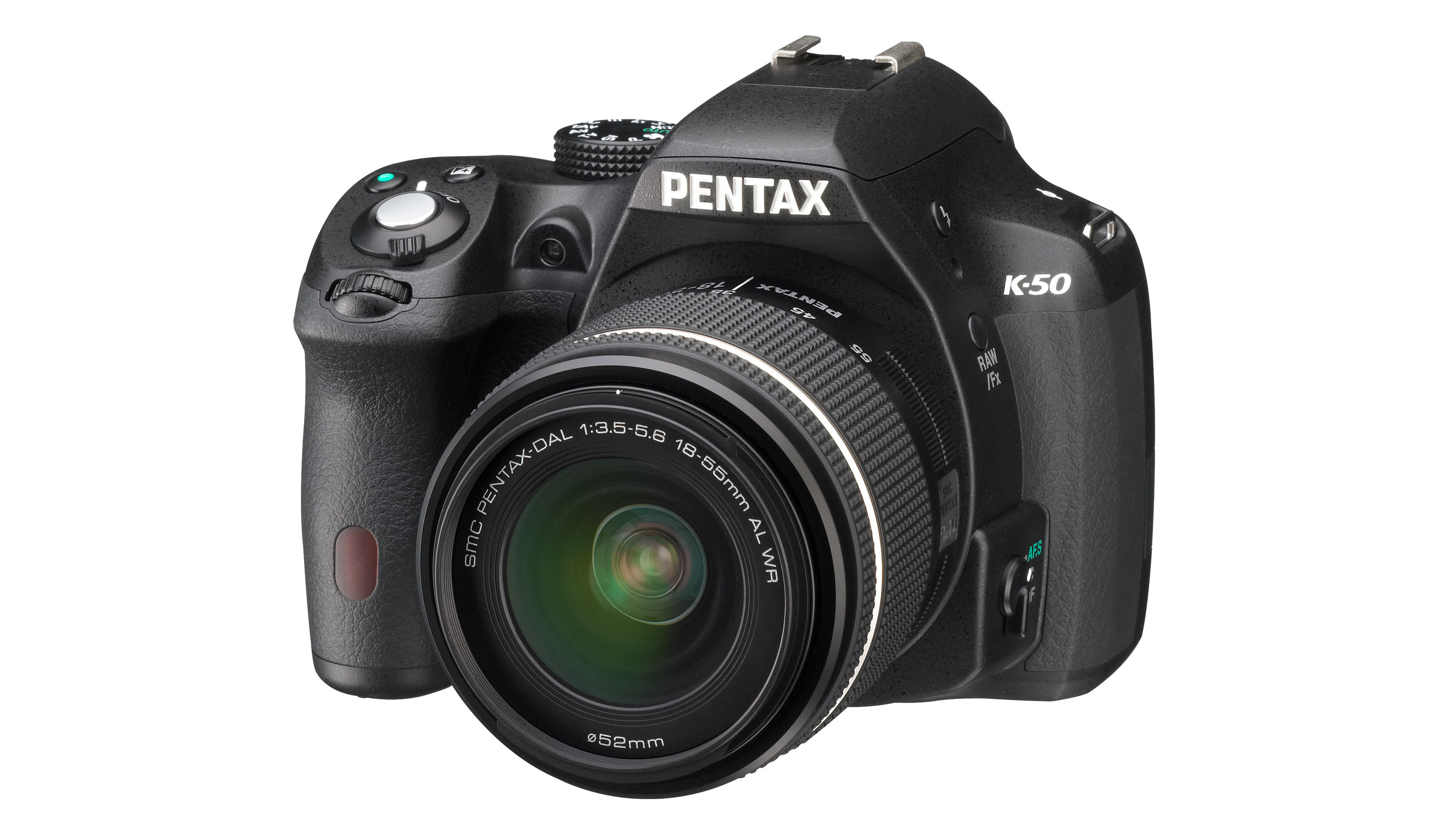Why you can trust TechRadar
The K-50 is very similar in shape and size to the K-30 it sits alongside. The grip is chunky and feels very nice in the hand. The textured coating at the front of the grip helps to give it a little extra purchase, which is useful when holding the camera one-handed.
It's a weatherproof camera, and as such it feels a little more robust than some of the other entry-level cameras on the market. It's also weightier than cameras such as the Nikon D5300, which help to lend an air of higher quality.

The camera can be a little noisy to operate, so it's perhaps not best suited to quiet situations such as wildlife photography. If you have sensor cleaning set to activate on start-up and shut-down, there is a knocking sound when you switch the camera off. Similarly, the kit 18-55mm makes quite a lot of noise when attempting to focus, while the shutter itself makes a fairly loud clicking noise.
One of the best things about using the K-50 is the 100% field of view offered by the viewfinder. This means that you won't get any nasty surprises creeping into the shot, and it's refreshing to see it on a camera at this end of the market. It's not the brightest viewfinder we've used, though it is reasonably large.

There are a decent number of buttons on the K-50 to give you direct access to settings such as ISO (sensitivity), white balance, exposure compensation and flash modes. Most of the buttons on the back of the camera are grouped on the right hand side, making them easy to reach with your thumb.
The only button on the back of the camera which is more awkwardly placed is the live view button, which can be found on the opposite side of the camera just next to the viewfinder. It also doubles up as the delete button when in playback. It's not too much of a problem though, since you'll probably be using the button fairly infrequently when compared with the others .
When you want to make a change to some parameters, for instance to white balance, an image will pop on the screen showing how your previous shot would have looked had that setting been used – it's a useful way to quickly gauge if the setting you're making is the right one. It also works for custom image and digital filter shooting.
On the side of the camera is a button labelled RAW/Fx. By default this is set to switch between raw and JPEG shooting modes, but you can customise it to another function if you prefer.

When the option to set the autofocus point manually is selected, if you hold down the OK button at the centre of the four way navigation pad, you'll be taken between the ability to use the arrows to navigate to the point you want, or use the arrows for their designated shortcut, such as white balance.
A sort of quick menu is accessed by pressing the info button while in shooting mode. This will bring up a display showing you the settings that are currently in operation, to make changes to any of them, use the arrow keys to navigate to the appropriate one and use the scrolling dials to alter the setting.
On the top of the camera is a mode dial, which is fairly simple. It features the usual aperture priority (Av), shutter priority (Tv), Manual and programmable modes as well as a couple of customisable memory recall slots and automatic, movie, and scene modes.
A small scrolling dial on the back of the camera is used to alter aperture if you're shooting in aperture priority or manual. Meanwhile, a second small dial is used to alter the shutter speed if you're in shutter priority or manual mode. If you are shooting in fully manual mode, it's a nice way to work, and feels very natural.
Comparing the K-50's user interface with the Nikon and Canon equivalents leaves it looking a little dated. However, on the plus side, with the screen's high resolution everything is nice and clear. The screen also has anti-reflective coating which does a good job in all but the very brightest of conditions.
It's a shame that you can't tilt or articulate the screen to help with shooting at awkward angles though. In terms of the menu itself, it's fairly sensibly laid out, but it can be a little tricky finding certain settings if you're in a hurry – spend some time familiarising yourself with the layout and that will be easier.
Amy has been writing about cameras, photography and associated tech since 2009. Amy was once part of the photography testing team for Future Publishing working across TechRadar, Digital Camera, PhotoPlus, N Photo and Photography Week. For her photography, she has won awards and has been exhibited. She often partakes in unusual projects - including one intense year where she used a different camera every single day. Amy is currently the Features Editor at Amateur Photographer magazine, and in her increasingly little spare time works across a number of high-profile publications including Wired, Stuff, Digital Camera World, Expert Reviews, and just a little off-tangent, PetsRadar.

